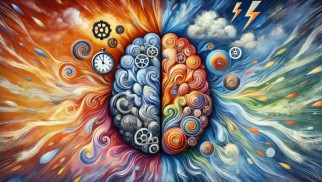Understanding Attention Deficit Hyperactivity Disorder (ADHD): Its Impact, Adult Behaviors, and Common Misconceptions


Attention Deficit Hyperactivity Disorder (ADHD) is a neurodevelopmental condition that affects millions of children and adults worldwide. Despite its prevalence, it is often misunderstood, particularly when it comes to its impact on daily life, behaviors in adults, and its darker aspects. Additionally, many individuals question whether their symptoms are indicative of ADHD or simply laziness. This article will explore these key topics, offering insights into the condition and its treatment, including medications like Strattera (Atomoxetine).
How Does ADHD Impact Daily Life?
ADHD can profoundly influence various aspects of daily living, making even routine activities feel like insurmountable challenges.
Here are some common ways ADHD manifests in daily life:
Time Management and Organization
- Individuals with ADHD often struggle to plan their day, prioritize tasks, and stick to schedules. This can lead to missed deadlines, forgotten appointments, and a perpetual sense of being overwhelmed.
Workplace Challenges
- At work, ADHD can impair focus, productivity, and the ability to complete long-term projects. Frequent distractions, difficulty following instructions, and impulsive decision-making can hinder professional success.
Relationships
- ADHD may strain relationships due to forgetfulness, inattentiveness, and impulsive behavior. Partners, friends, and family members might feel neglected or misunderstood.
Emotional Regulation
- People with ADHD often experience heightened emotions, from frustration to excitement, which can shift rapidly. Managing these emotions can be difficult, especially in stressful or high-pressure situations.
Physical and Mental Health
- Poor organizational skills can result in inconsistent eating habits, disrupted sleep, and neglect of personal care. Additionally, untreated ADHD increases the risk of developing anxiety and depression.
What Are the Behaviors of ADHD in Adults?
While ADHD is often associated with children, it persists into adulthood for many individuals.
Adult ADHD behaviors can vary but commonly include:
Forgetfulness
- Adults with ADHD frequently forget important tasks, such as paying bills or attending meetings. This can lead to financial or professional difficulties.
Difficulty Focusing
- Sustained attention on tasks can be a challenge. Adults may find themselves procrastinating, leaving projects incomplete, or jumping between tasks without finishing any of them.
Impulsivity
- This can manifest as interrupting conversations, making hasty purchases, or engaging in risky behaviors without considering the consequences.
Restlessness
- Instead of physical hyperactivity seen in children, adults often describe an "inner restlessness." They might feel constantly on edge or have trouble relaxing.
Chronic Disorganization
- Managing paperwork, household chores, or a work schedule can be overwhelming. Many adults with ADHD rely on external tools like apps or calendars to stay on track.
Struggles with Social Interactions
- Difficulty in maintaining attention during conversations or being overly talkative can lead to social misunderstandings.
What Is the Dark Side of ADHD?
ADHD is not just about difficulty focusing or being "hyper." It has a darker side that can significantly affect an individual’s life:
Low Self-Esteem
- Repeated failures, criticism from others, and the perception of underachieving can damage self-confidence.
Social Isolation
- Struggles with communication, emotional outbursts, or impulsive actions may alienate friends and loved ones.
Substance Abuse
- Some individuals with ADHD turn to alcohol or drugs as a way to self-medicate, seeking relief from symptoms.
Burnout
- The constant effort to appear "normal" and mask symptoms can be exhausting, leading to emotional and physical burnout.
Co-Occurring Disorders
- ADHD often occurs alongside other conditions such as anxiety, depression, or learning disabilities. These comorbidities can complicate diagnosis and treatment.
Do I Have ADHD or Am I Just Lazy?
One of the most common misconceptions about ADHD is confusing its symptoms with laziness.
It’s essential to understand the key differences:
Neurological Basis
- ADHD is a neurological disorder that affects brain function, particularly in areas related to attention, impulse control, and executive functioning. Laziness, on the other hand, is a temporary lack of motivation or effort, often due to external factors like fatigue or disinterest.
Desire to Improve
- Individuals with ADHD typically want to succeed and improve but struggle despite their efforts. Laziness does not usually involve the same internal frustration or repeated failed attempts.
Inconsistent Performance
- ADHD is characterized by inconsistent performance. A person might excel at tasks they find stimulating but fail at those they consider mundane. Laziness tends to affect performance across all tasks equally.
If you suspect you have ADHD, it’s important to consult a healthcare professional for an accurate diagnosis. They can differentiate ADHD from other conditions and recommend appropriate treatments.
Treatment Options: The Role of Strattera (Atomoxetine)
Medication is a cornerstone of ADHD management, often used alongside behavioral therapies. One commonly prescribed medication for ADHD is Strattera (Atomoxetine).
What Is Strattera?
Strattera is a non-stimulant medication that works by increasing levels of norepinephrine, a neurotransmitter involved in focus and attention. Unlike stimulant medications, such as Adderall or Ritalin, Strattera has no potential for abuse or dependency, making it an attractive option for some patients.
How Does Strattera Work?
It targets the brain’s prefrontal cortex, improving symptoms like inattention, impulsivity, and emotional regulation. However, it may take several weeks for patients to experience its full benefits.
Who Can Benefit from Strattera?
Strattera is often recommended for individuals who do not respond well to stimulants or have a history of substance abuse. It’s also suitable for those with coexisting conditions like anxiety, as it has a calming effect.
Side Effects of Strattera
Common side effects include nausea, dry mouth, decreased appetite, and fatigue. In rare cases, it may increase suicidal thoughts in children and adolescents, so close monitoring is essential.
Usage and Dosage
Strattera is usually taken once or twice daily, with or without food. Dosages vary depending on the patient’s weight, age, and response to the medication.
Final Thoughts
ADHD is a complex and multifaceted condition that affects many aspects of life, from work and relationships to mental health. Recognizing the signs and understanding its impact is the first step toward effective management. For individuals questioning whether they might have ADHD, seeking professional advice is crucial to avoid self-diagnosis or self-criticism.
Medications like Strattera (Atomoxetine) offer hope for managing symptoms, particularly for those who do not respond well to stimulants. Combined with therapy, lifestyle adjustments, and a supportive environment, individuals with ADHD can lead fulfilling lives, turning challenges into opportunities for growth and resilience.
Article post: Editorial Team of RXShop.md
(Updated at Dec 23 / 2024)

